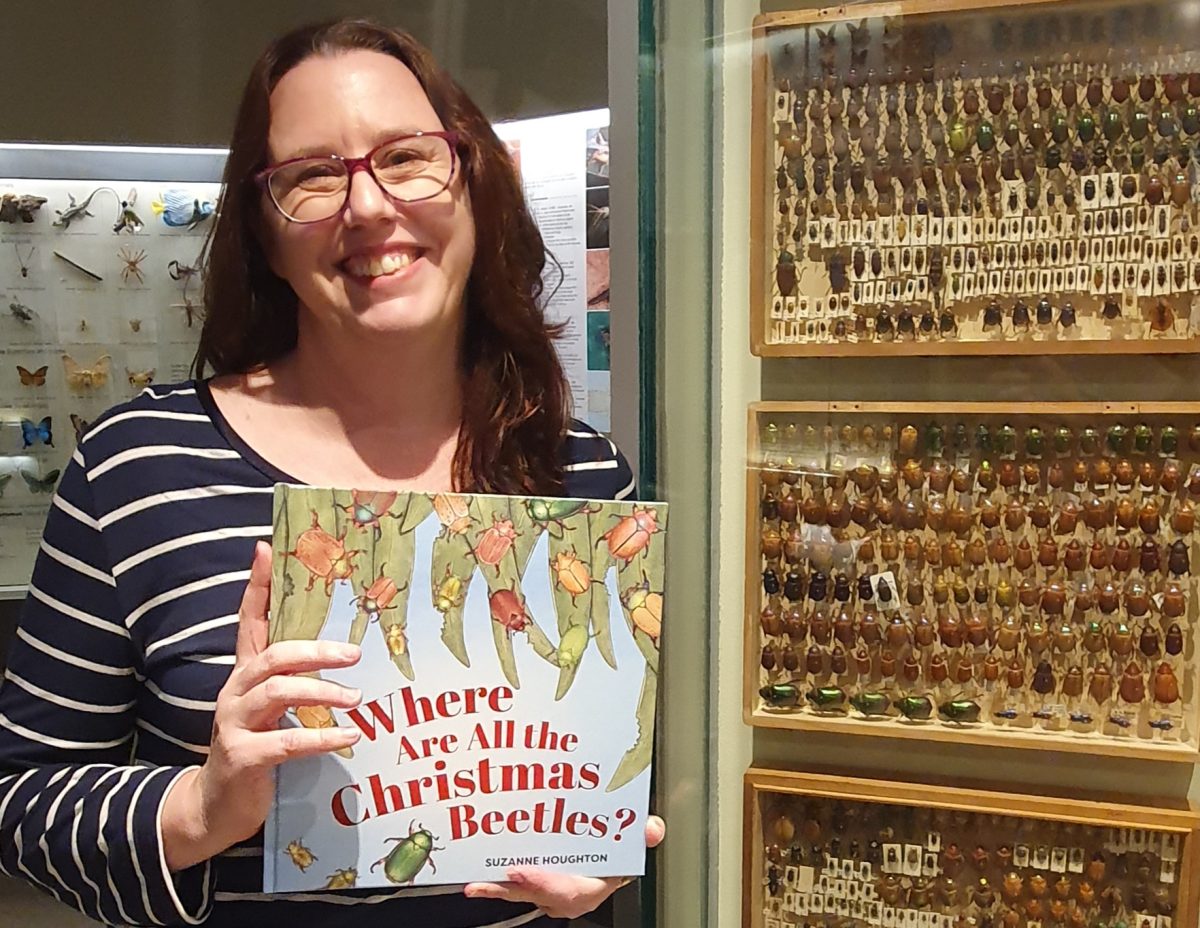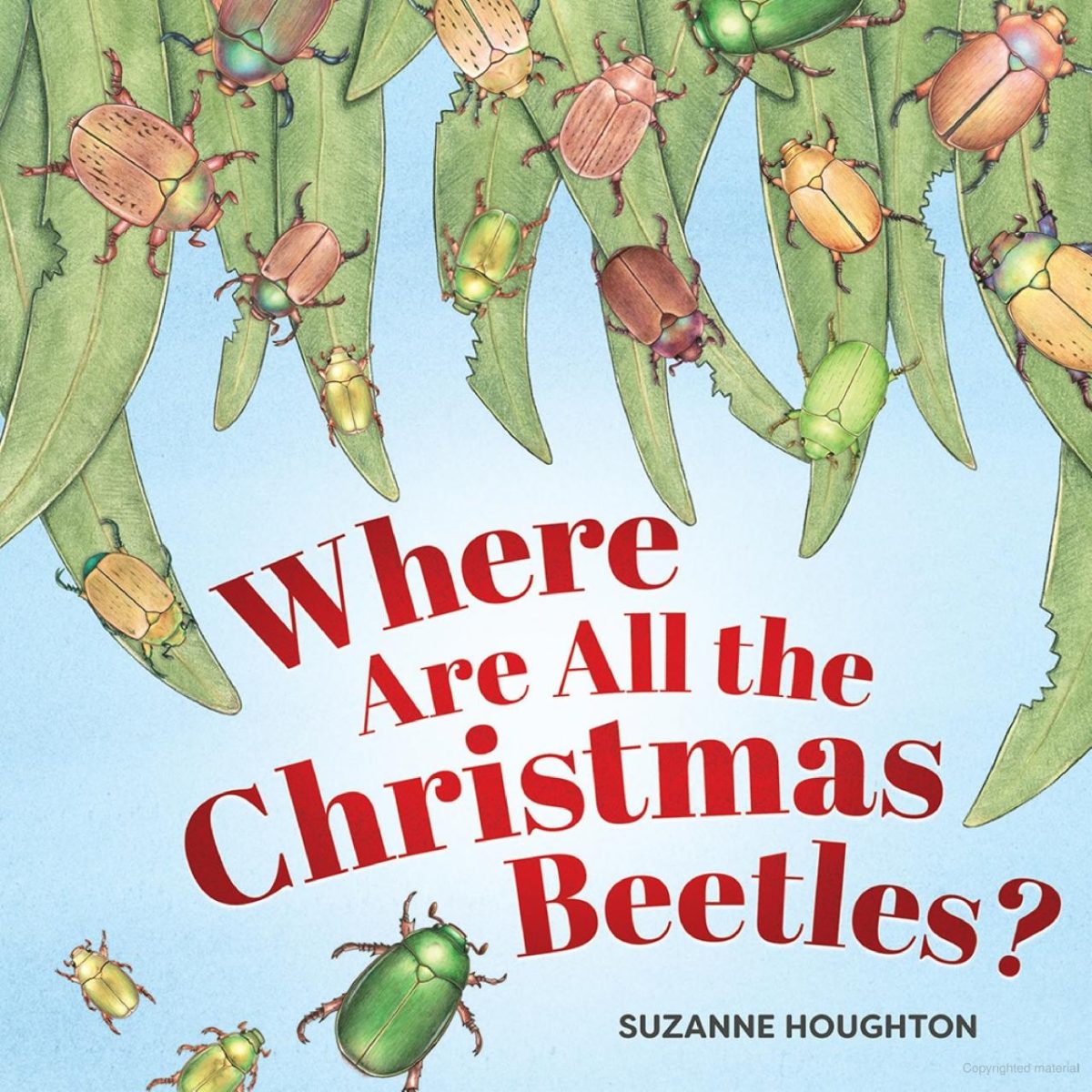
Wagga children’s author and illustrator Suzanne Houghton. Photo: Supplied.
Suzanne Houghton has noticed something missing at Christmas time in recent years.
“I’d been thinking for ages that I hadn’t seen any Christmas beetles,” the Wagga children’s author and illustrator said.
“I remember that we used to walk around with the kids and I would tell them that they were magic, so not to step on them, and more recently I’ve been wondering where they disappeared to.”
The disappearance of the iconic Aussie scarab is the inspiration behind Suzanne’s latest book published by the CSIRO.
“Last year, I saw an entomologist on TV, saying that scientists had been wondering the same thing and that they were doing an Australian Christmas beetle count,” she explained.
“I had done two books with CSIRO at that point, and I thought that it would be the perfect subject for a non-fiction Christmas book.
“I pitched it to them last year, and they immediately loved it!”
With a knack for depicting quirky and colourful creatures, Suzy started reading up and was thrilled to discover the variety she had to work with.
“When I first had the idea, I hadn’t actually done any research and of course, that’s always a massive part of doing a non-fiction book,” she said.
“I didn’t know there were so many species because down here, they are normally this sort of brownie-goldy colour, but the further north you go, they seem to get more colourful; there are the greens and even purple, so that was really interesting.”

An image of a Christmas beetle captured in Wagga and posted to the iNaturalist site in January 2023. Photo: discover_gondwana.
The book was released this year to coincide with Invertebrates Australia’s Christmas beetle count, something that Suzy is hoping everyone will get behind.
“This is the second year they have been running their citizen science-based program and they have asked for help to try and understand the distribution of these beetles,” she said.
Associate Professor Tanya Latty from the University of Sydney’s School of Life and Environmental Sciences is behind the project and said there were fears that some of the 35 species of Christmas beetle could be in trouble.
“You’ve got some that are pretty widespread and you see popping up in cities all around, but there are other species that are much more localised in more native bushland and there’s some species that are only concentrated in very small areas,” she said, explaining that they want the public to post photos of the bugs they find.
“We don’t know necessarily why one neighbourhood might be seeing heaps of Christmas beetles but then not much further, there are none.
“You may have one species that you see a lot of but maybe you’re not getting a lot of a different species.”
One theory is that the native species is being mistaken for an invasive pest and either exterminated or miscounted.
“There’s a small beetle called an Argentinian lawn scarab that’s sort of a brown, mottled species that really likes turf grass; those are in pretty high numbers at the moment,” Dr Latty said.
“I think that’s something to be a little cautious about. When people go, ‘There’s no problem with the Christmas beetles, I’ve seen heaps’, check what they’re seeing is actually a Christmas beetle.”

Suzy’s new book is helping to encourage a new generation of ”citizen scientists”. Photo: CSIRO.
With the release of her book Where Are All the Christmas Beetles? Suzy hopes to get the younger generations on board to help understand and protect a remarkable Australian animal.
“Last year when they did the first count and people were uploading photos from all over, they were seeing beetles that hadn’t been seen since the early ’80s, so already there have been some great findings,” she said.
“Who’d have thought I’d ever be so interested in bugs!”
Make sure you pick up a copy of Suzy’s book for Christmas and keep your camera handy to get involved in the count!







